A trip to a Maine lake turned into a learning experience. Here’s what I learned cooking in a rental cabin kitchen.

As I write this, I am sitting on a screened-in porch overlooking Salmon Lake in Maine. It’s early morning and a breeze is wafting in off the lake, rustling the leaves around the porch. Birds are chirping, trilling and singing melodies. The lake is rippling lightly, creating distortion on the otherwise glass-like surface. In the distance, someone has just started their gas-powered mower. The whirl of it comes closer and then moves away as they snip the grass in some unseen distance.
It’s so peaceful. After three days here, I can say that and mean it. But at first, life at this 1899 cabin as a bit of a culture shock.
Renting a cabin on a Maine lake for a week this summer was a lark. I’d spontaneously bid on a stay during a charity event and won. After some back and forth, I booked the trip, extending it slightly beyond what I’d bid on. As the time for our trip approached, I prepped and packed, preparing to not leave the cottage for days.
Then the day came. Even though we had pictures to get us excited, arriving was like walking into another world.
The rustic cabin — perhaps I didn’t really comprehend how rustic it was — was a summer cottage with bare wood walls, no heat and a beautiful set of doors that open opposite each other to let the lake breeze in and out.
Despite many windows, the cabin was dark inside — perhaps from the shade of the trees that surrounded the cabin.
In the Rental Cabin Kitchen
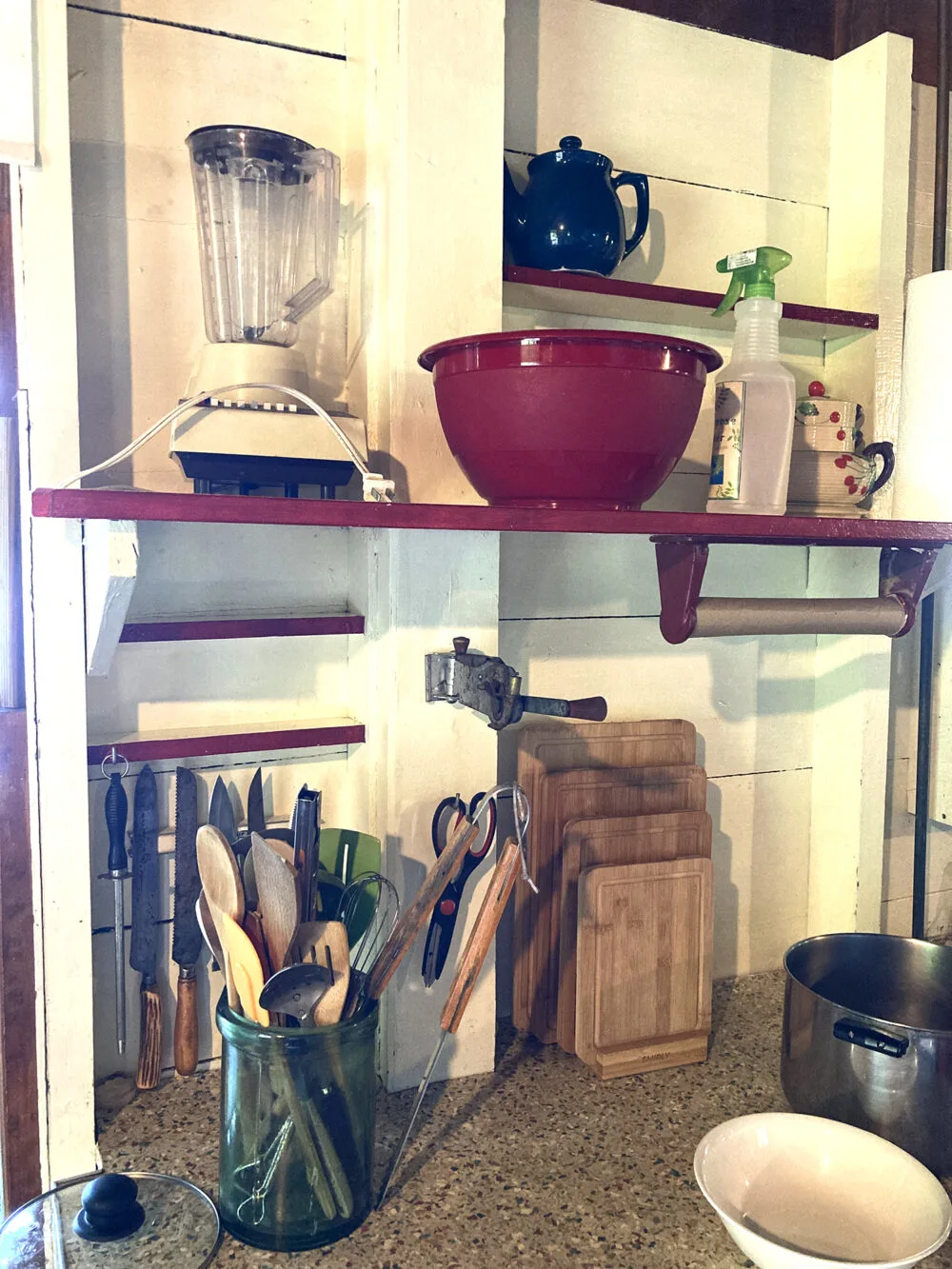
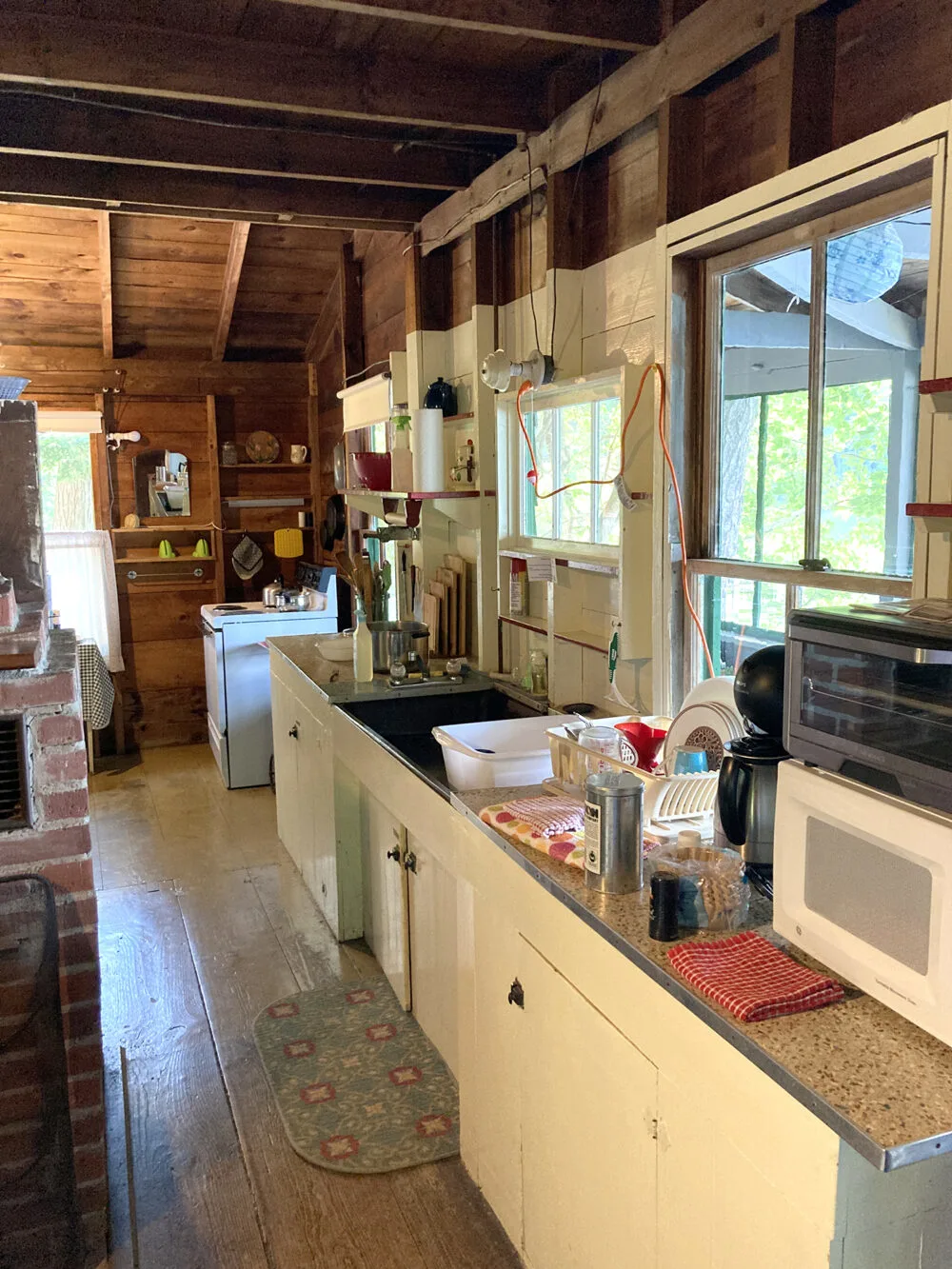
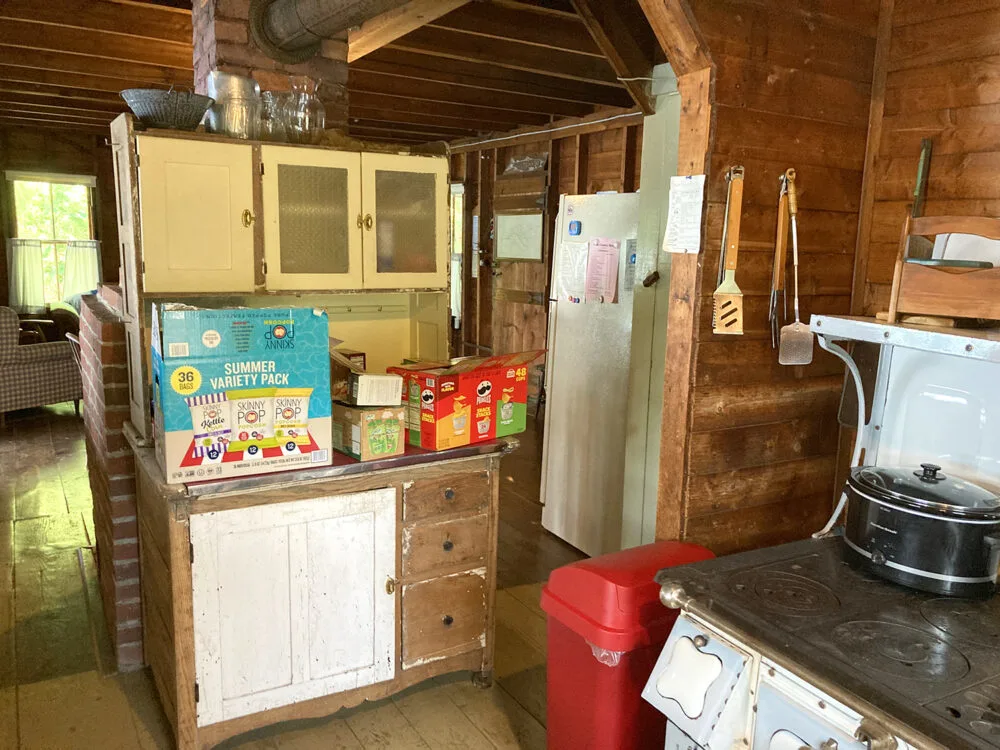
In a way, it was like stepping through a portal to the past. The rental cabin kitchen — spacious and well-appointed — had a long, shallow cast-iron sink to wash dishes in. An old gas and wood-fired stove sat on one side while a more modern electric range sat on the other. With ancient wiring, we could use the coffee maker or the microwave or the toaster oven, but never more than one at once.
The sleeping quarters on the second floor — two bedrooms and a bunk room — didn’t have full walls so there was only an illusion of privacy. At night, when my daughter itched bug bites or my son talked in his sleep, it was shared noise.
It was an amazing experience. Free from the trappings of constant connectedness and way-too-many streaming services, we had to create our fun. We took to the lake, swimming, paddling and floating. We played board games. And we read.
Without a clock or a schedule, we moved freely through the day, eating when we were hungry and coming inside when we felt like we had a bit too much sun.
Relaxing is the best way to describe it.
But back to the kitchen. In a rustic kitchen that’s only somewhat modernized, care must be taken.
Lessons from the Kitchen
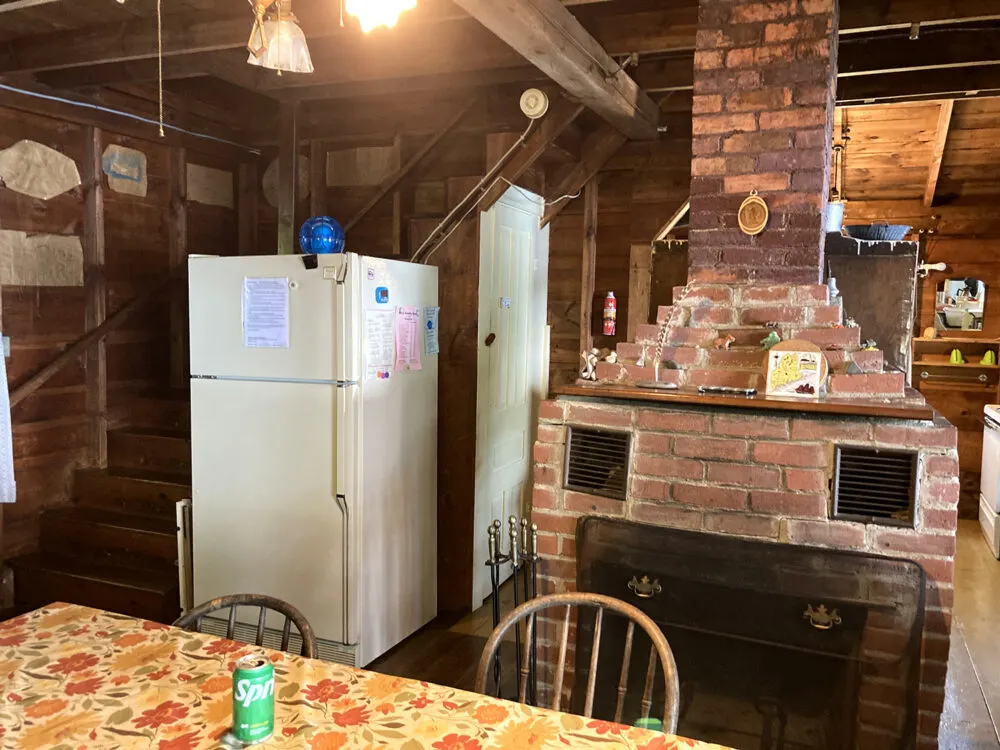
First, there was the sink. The unglazed cast iron, for instance, couldn’t be left wet. Water would make it rust — much like it does with unglazed cast iron pans. So each time we used the water, we had to squeegee the sink and wipe it down. Every few times, we’d also rub it with oil.
The more-than-century-old structure also had other inhabitants. Spiders, for instance. But in the kitchen, it was the ants that drove us nuts.
The ants appeared on our second day, tiny and numerous. We’d already been wiping down counters after cooking, but we had to shift to cleaning the counter before, during and after cooking — an almost obsessive ritual to battle the growing problem. Fortunately, the cabin owners had a magic concoction — borax, sugar and water — that drove the ants away instantly on the third morning.
Since it was a vacation, our aim was to not have to fuss with picking up food or running out for forgotten things.
Cooking on Vacation
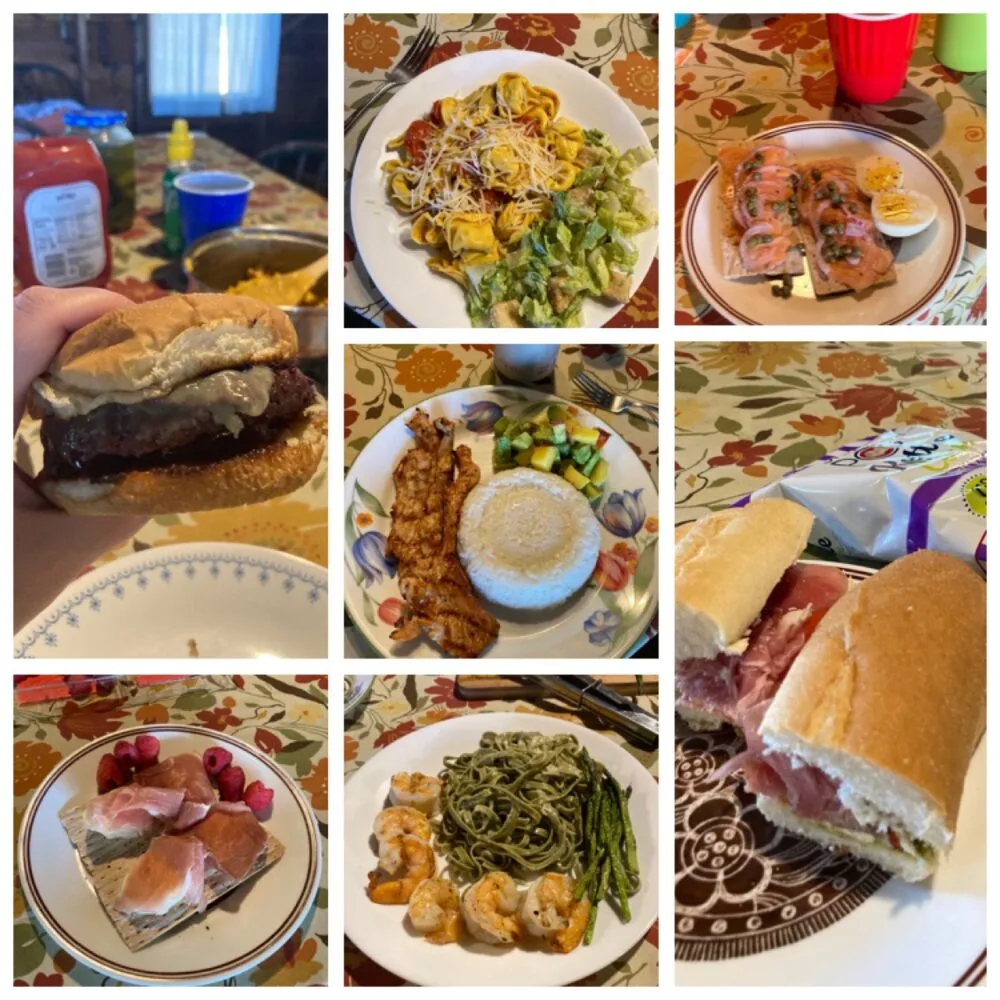
In preparation for the trip, we’d packed enough food to feed us for double the length of our stay. I’d loosely planned vacation meals, but left room for adaptation and creativity.
Chicken could become a sandwich filling or be barbecued for rice bowls. Burgers could be topped with American cheese, lettuce and tomato or share a bun with pesto, fresh mozzarella and prosciutto. Extra large shrimp — the ones that had been in our freezer at home — could join pasta on the plate or be slathered with sauce and served with rice. The options were endless.
Well, almost. I’d forgotten bits — garlic for the pasta; pickled red cabbage to go with the brats — and decided not to sweat it. We worked with what we had and didn’t worry about what we didn’t.
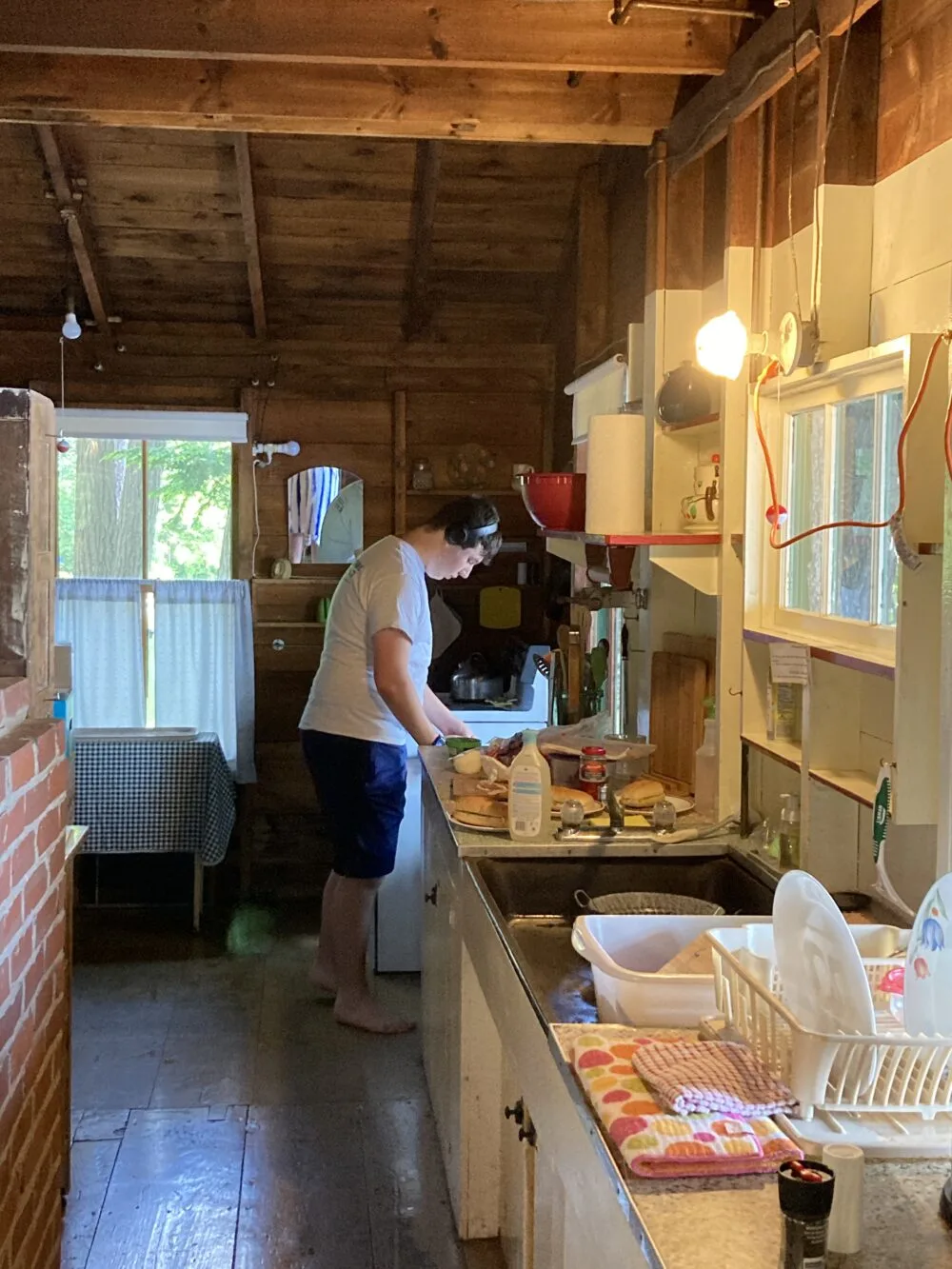
We took turns crafting meals in the rental cabin kitchen.
My daughter made lunch and part of dinner the first night. I made lunch and all of dinner the second. My son made lunch and part of dinner the third. And so on.
We debated the merits of how each of us made sandwiches — my daughter heavy on the cheese and onions; my son heavy on the pesto and cheese; me heavy on the roasted red peppers and prosciutto. We liked my son’s the best.
Aiming for balance for meals, we mixed it up with a protein, a vegetable or fruit and a carb each time. We had two melons, two quarts of strawberries and one of raspberries and enough nectarines for days. I’d packed five boxes of macaroni and cheese but also fancy pasta and tortellini. Will and Paige voiced concern when I only brought enough rice for one meal but didn’t notice when it nearly went uneaten.
What We Didn’t Do
What I didn’t pack were my kitchen instruments. I didn’t bring the tiny spoon we use for capers at home (the handle of a spoon did the trick in a pinch!). I didn’t pack my basting brush, though that was the one item I wish I had brought along — but only once, fleetingly. It was okay to adapt.
I also didn’t bring my sharpened knives in their carrying case, which is the one thing I wished I’d packed. Even with sharpening, the knives at the cabin with startlingly dull — which ups the risk for injury. Although we all came through unscathed, it was a little scary cutting with the dull knives, nonetheless.
Ultimately, my friends, the lesson here is in smart packing and flexibility. We made do with what was available (and we were lucky that this kitchen was pretty well-appointed). And we made do with what we brought. Though I wanted better coffee the first morning, I found that using the pour-over instead of the automatic maker did the trick (well, until I ran out of coffee). And — aside from the knives — we ultimately brought what we needed without going overboard. For safety’s sake, I wouldn’t ever cook in a rental cabin kitchen again without my own knives.
All of this got me thinking about how I cook at home and how rigid I can become about what we are — and are not — eating. At home, I always sweat the small stuff, running to the store when something isn’t quite what I planned. We are easily derailed and far too tempted by the ease of take out.
But our best dinners are the ones where I simply adapt.
On a recent night at home, we discovered the garlic bread I’d purchased just a day earlier had mold. But we still really wanted garlic bread. I was debating running to the grocery store when Paige asked, “Can’t you just make it?”
And that night I could — I had an extra baguette I’d baked still. I mixed butter and garlic, parmesan and salt and pepper and created a spread. Then I baked it to perfection.
Will and Paige declared it one of the best garlic breads they’d had.
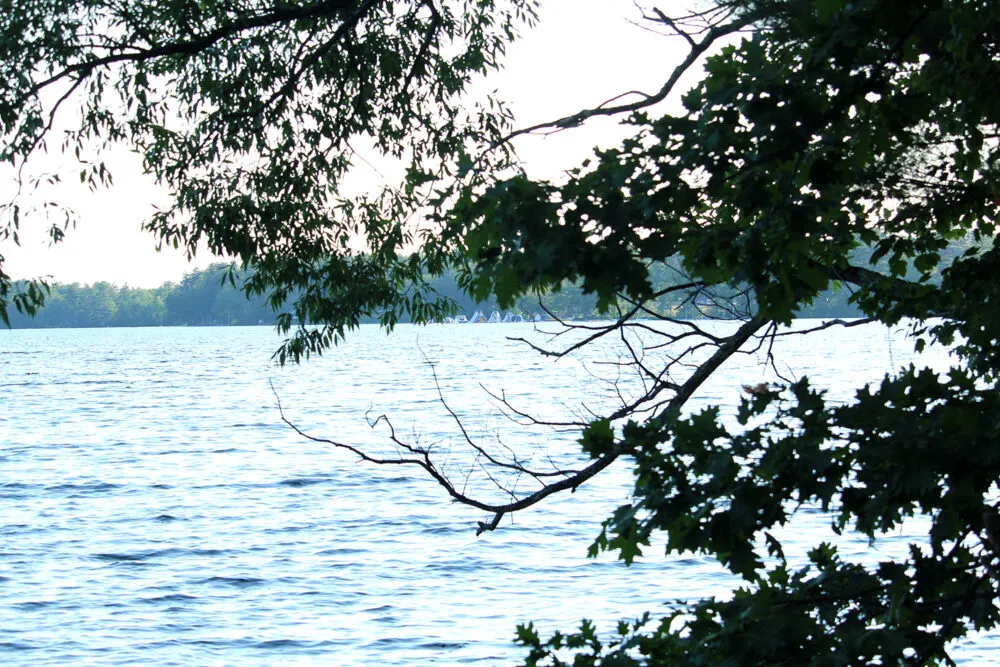
That’s the power of flexibility and adaptation. And it needn’t be limited to when I am cooking in a rental cabin kitchen.
In many ways, this was the reset I needed. Beyond remembering that cooking can be flexible, it reminded me how to craft meals, how to shop for food without waste and how to create from what we have. But it also reminded me how to relax and slow down, something my closest friends can attest that I am not good at.
May you all find this kind of peace this summer.
